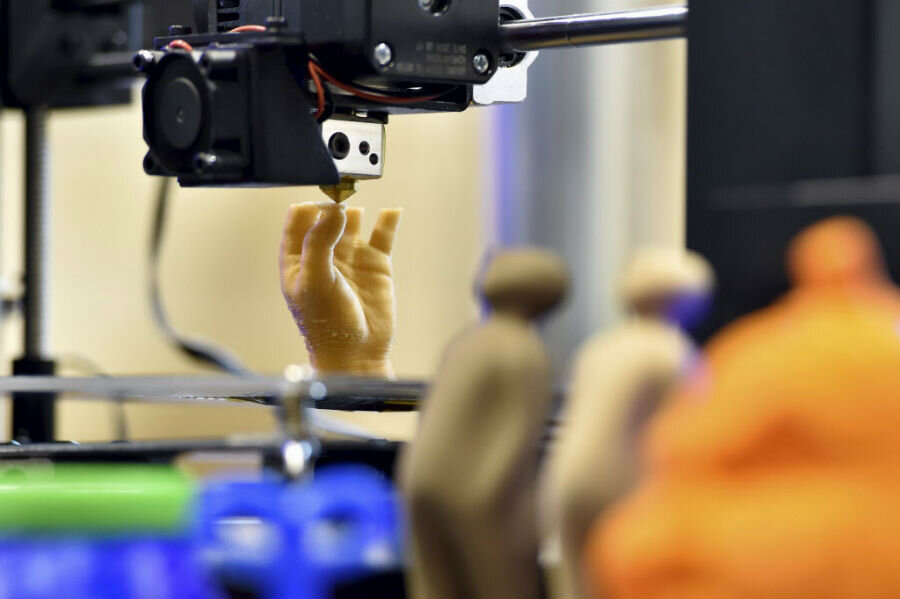Scientists progress toward 3D printed items that 'remember' shape over time
Loading...
3D printing is a process by which objects are created by piling layer upon layer of some material to create an almost limitless range of shapes and designs. While the objects created by 3D printing are extremely versatile, once printing is complete, they are generally limited to a single form.
Now, however, researchers have made exciting new advances in "4D printing," a method of 3D printing that allows objects to change over the fourth dimension, time.
The new process could have applications in multiple scientific fields.
Researchers from MIT and the Singapore University of Technology and Design (SUTD) published a paper in the online journal Scientific Reports earlier this month detailing advances in methods to create 3D-printed objects that can change shape when subjected to some sort of outside stimuli such as light, heat, or electricity.
The changes in shape are possible thanks to to the special properties of so-called "shape-memory polymers," which have the ability to "remember" their original shape even after that shape has been radically distorted. In the case of the MIT/SUTD study, a small 3D-printed replica of the Eiffel Tower was bent out of shape and "frozen" in place at room temperature. When heat was applied to the model, the tower returned to the Parisian monument's familiar shape.
The team's biggest contribution to shape-memory printing is also the smallest. The printing technique used in this study is known as microstereolithography, using projected light to print patterns on successive layers of resin. According to MIT News, microstereolithography gives the team the ability to print objects the width of a human hair, ten times smaller than what other teams have been able to accomplish with shape-memory printing.
“Because we’re using our own printers that offer much smaller pixel size, we’re seeing much faster response, on the order of seconds,” Nicholas X. Fang, one of the MIT researchers, told MIT news. “If we can push to even smaller dimensions, we may also be able to push their response time, to milliseconds.”
Researchers found that the tiny structures such as a grabbing claw, coils, and flowers, could be stretched to three times their original length and twisted out of shape without breaking, according to an MIT press release. When the structures were exposed to temperatures from 40 to 180 degrees Celsius (104 to 356 degrees Fahrenheit), they would back to their original shapes in seconds.
The small scale of the objects created by the team have allowed them to shave several seconds off of the time it took the similar objects to revert to their original form in previous studies. Still, the response time is still not quite as fast as researchers would like.
“The reality is that, if you’re able to make it to much smaller dimensions, these materials can actually respond very quickly, within seconds,” Dr. Fang told MIT News. “For example, a flower can release pollen in milliseconds. It can only do that because its actuation mechanisms are at the micron scale.”
Ultimately, the team hopes the new shape-memory techniques will have various applications, including hinges for solar cells that can track the sun and self-deploying structures for aerospace applications.








